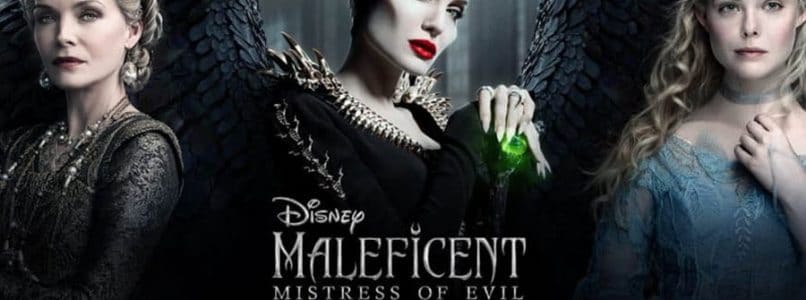Aurora is an optimistic and kind young woman who is queen of the Moors, a magical land where fairies roam and plants obey orders.
She’s also an idealistic leader who believes her subjects can broker peace with Ulstead, a bordering land inhabited by creatures—humans—who have long been at odds with the Moors.
Yes, Aurora is a human, too, but she was raised by fairies. She even considers an evil fairy named Maleficent to be her fairy godmother.
Aurora, it seems, is the ideal queen to bring the two sides together—a notion that is bolstered when Philip, the son of the king of Ulstead, asks her to marry him.
But then Maleficent forbids the marriage. And then she goes on an out-of-control rampage destroying parts of the Ulstead castle and apparently killing the king, too.
It appears the two kingdoms will be at war—forever.
“Love doesn’t always end well,” Maleficent says.
The Disney film Maleficent: Mistress of Evil (PG) opens this weekend, starring Angelina Jolie (Kung Fu Pandaseries, Salt) as Maleficent, Elle Fanning (Maleficent, Astro Boy) as Aurora, and Michelle Pfeiffer (Ant-Man and the Wasp) as Queen Ingrith of Ulstead.
The movie is a sequel to the 2014 movie Maleficent, which was loosely based on the 1959 animated film Sleeping Beauty. Both Maleficent films, though, add major plot twists the box-office original did not.
Much of Mistress of Evil is thematically dark, even though you’ll leave the theater feeling upbeat. (More on that below, if you’re curious). Visually, the film is stunning, thanks to colorful landscapes, a larger-than-life castle, cute and other-worldly creatures and CGI effects that make you feel like you’re there.
But that realism has a tradeoff for young children: Much of the film will be too violent and too disturbing for young children, if not for a few older ones, too.
Warning: moderate/major spoilers!
(Scale key: none, minimal, moderate, extreme)
Violence/Disturbing
Moderate. Maleficent, with black wings and black horns, may scare children. The film opens with a nighttime scene in which Maleficent corners two men who had snuck into her kingdom. Maleficent—who can control nature—uses tree roots and vines to capture them. Later, we hear someone call her a witch. We watch her shoot green lightning-type bolts from her fingers at people. We see someone shot (with a crossbow) and fall into the ocean. Winged creatures that look a lot like Maleficent rally to go to war with the humans. We watch as fairies are locked in a room and many of them killed with a red powder in what looks like an attempted genocide. A secondary character dies; we watch his spirit leave him. The film ends with a major battle, although it’s not bloody or ultra violent. Finally, alien-like creatures fill the film. Most of them are cute, although some are quite ugly. Sensitive children might have nightmares after seeing them.
Sexuality/Sensuality/Nudity
Minimum. Aurora and Phillip kiss two or three times.
Coarse Language
None.
Other Positive Elements
Both Maleficent movies spotlight Maleficent’s relationship with Aurora. In the second film, Maleficent makes many applause-worthy decisions as a parent/godmother.
Other Stuff You Might Want To Know
The film showcases magic, even if we don’t see cauldrons and broomsticks. Maleficent uses magic for bad and for good.
Life Lessons
Redemption is always possible: This film captures that theme beautifully, even if we see a lot of carnage along the way.
Self-sacrifice makes the world better: The film’s final five minutes include a plot twist affirming this message.
Looks can be deceiving: One major character—to outsiders, at least—appears to to good, when, in fact, she is evil and self-centered.
Peace requires selflessness: The two kingdoms failed to live in harmony because of a lack of trust—and in some cases, hatred. Eventually, they come together.
Worldview/Application
The world of Maleficent: Mistress of Evil is one of good and evil, although Maleficent herself seems to have the greatest power in that universe. She controls nature and is told, “In your hands you hold the power of life and death—destruction and rebirth.” (Although, oddly, we hear characters talk about a “christening.”)
It’s an unbiblical worldview that may be worth discussing with children on the ride home.
The film’s core plot, though, has little resemblance to the original story. Evil people don’t stay evil, and supposedly good people turn out to be bad. The film’s final few moments even have a redemptive ending.
Unfortunately for families with small children, though, we have to wade through a ton of scary scenes and ugly creatures to get to that moment.
What Works
The animation. The ending. The chemistry between Maleficent and Aurora.
What Doesn’t
The story. It lacked the charm of the best Disney movies.
Discussion Questions
1. What lessons about life does the character of Maleficent teach us?
2. Is peace always possible? What is required for peace between nations? Between individual people?
3. Why was Queen Ingrith filled with hatred?
4. What does the movie teach us about redemption?
Entertainment rating: 2.5 out of 5 stars. Family-friendly rating: 3.5 out of 5 stars.
Rated PG for intense sequences of fantasy action/violence and brief scary images.











